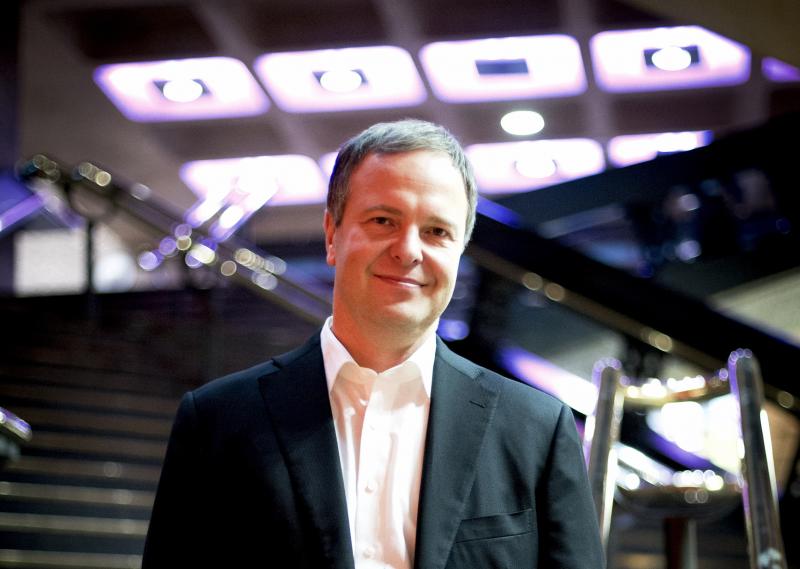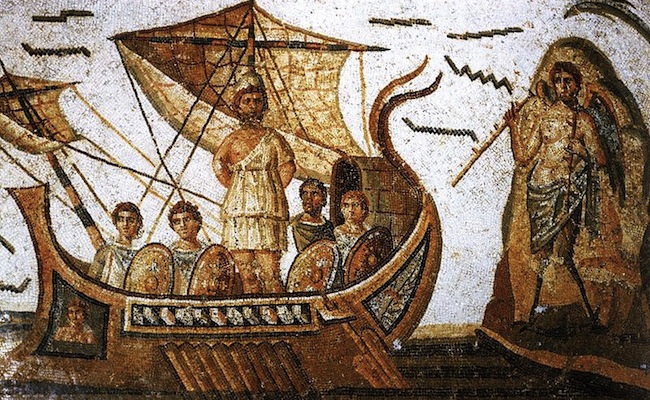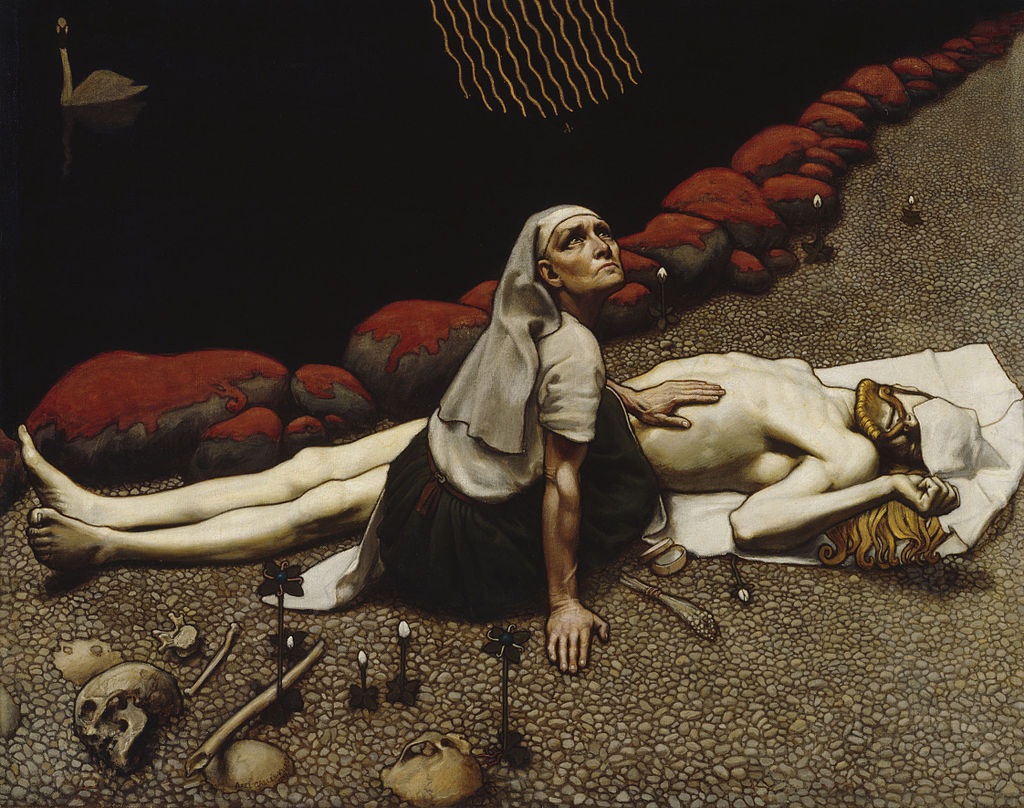BBC Singers, BBCSO, Oramo, Barbican | reviews, news & interviews
BBC Singers, BBCSO, Oramo, Barbican
BBC Singers, BBCSO, Oramo, Barbican
Electrifying Sibelius, sea journeys with crazy dancing by Nielsen and Glanert

It's official: if you want to be guaranteed an infallible musical adrenalin boost in London, you can always be sure to find it with Finnish conductor Sakari Oramo and his BBC Symphony Orchestra. And it's not just a question of splashy excitement: Oramo is a rigorous rehearser.
This was a concert of journeys, sea-girt in the first half, with plenty of dancing along the way. Nielsen's Rhapsodic Overture "A Fantasy Journey to the Faroe Islands" is an odd one (which of his works isn't, in a good way?). Occasional it may have been, composed for Danish concerts in 1927, for which 50 Faroese visitors had been asked to sing national songs. One of those, possibly better known in its four-hand treatment by Grainger as "Let's dance gay in green meadow", makes a riotous conclusion, not so much rollicking in Oramo's headlong interpretation as demonic, an island invasion of a terrifying sort. The opening seascape is far from "public" music, a poetic response parallel to Nielsen's Helios Overture which would have made just as good a starter.
In fact that might have linked even better, mythically speaking, to Glanert's spellbinding legend. Megaris has a subtitle even more elaborate than Nielsen's - Seascape: Siren's Last Lament for orchestra and vocalising chorus. It's the ghost of Parthenope, the siren driven to her death by Odysseus's resistance to her song (a Roman mosaic of the episode pictured below) and washed up by a rock in the bay of Naples, that we hear in an offstage soprano voice. The chorus takes up her inarticulate sounds; this was a gift to the BBC Singers to mesh with their companion orchestra. Megaris has an almost old-fashioned tone-poem format, three threnodies punctuated by two dance-rhapsodies. But what brilliance in those frenzied bacchanals - part Strauss Salome's Dance, part Ravel Daphnis and Chloé when the voices join in, with a bluesy theme close to the jazz riff in Milhaud's La Création du monde. I was waiting, in all the iridescent textures, for a sound as original as Nielsen's seagull cry on the E flat clarinet, and we got it in the weird ricocheting of first and second violins, either side of the conductor.
The chorus takes up her inarticulate sounds; this was a gift to the BBC Singers to mesh with their companion orchestra. Megaris has an almost old-fashioned tone-poem format, three threnodies punctuated by two dance-rhapsodies. But what brilliance in those frenzied bacchanals - part Strauss Salome's Dance, part Ravel Daphnis and Chloé when the voices join in, with a bluesy theme close to the jazz riff in Milhaud's La Création du monde. I was waiting, in all the iridescent textures, for a sound as original as Nielsen's seagull cry on the E flat clarinet, and we got it in the weird ricocheting of first and second violins, either side of the conductor.
Megaris would be a great candidate for choreography, and by the same token it's surprising that Oramo doesn't conduct more ballet and opera. His gestural definition reached its zenith in Sibelius's Four Lemminkäinen Legends - an early work from the mid-1890s, taking a hero from the Finnish epic as its subject like the Kullervo Symphony before it. But all Sibelius is here, sometimes in rough-hewn form, sometimes in as sophisticated a guise as anything he composed (the amazing "Swan of Tuonela", with its aching cor anglais solo taken to perfection by Alison Teale and poetic solo-cello refrains from Susan Monks, teased out in the cadencing by Oramo). The blast of horns at the start - a chord Sibelius would re-use in the original version of his Fifth Symphony - and the gutsy string drone for the courtship dances of "Lemminkäinen and the Maidens of Saari" - told us we were in for an earthy hero's life. The long, hyper-Tristanish love theme was timed to peak just right, like the evil swells of "Lemminkäinen in Tuonela" (pictured above: Akseli Gallen-Kallela's depiction of Lemminkäinen's mother with his body by the waters of Tuonela).
The blast of horns at the start - a chord Sibelius would re-use in the original version of his Fifth Symphony - and the gutsy string drone for the courtship dances of "Lemminkäinen and the Maidens of Saari" - told us we were in for an earthy hero's life. The long, hyper-Tristanish love theme was timed to peak just right, like the evil swells of "Lemminkäinen in Tuonela" (pictured above: Akseli Gallen-Kallela's depiction of Lemminkäinen's mother with his body by the waters of Tuonela).
The Barbican is too amplifying and constricted a space for everything that Oramo wanted to project; the air of the Birmingham hall would have done wonders. But there's no denying that the orchestra played its heart and soul out for Oramo, as they always seem to do these days (I've never heard any of the players have a less than enthusiastic word for their Chief Conductor). The final homecoming of Lemminkäinen, his body pieced together by his dear old mum, was predictably thrilling. Placed between his bracing Nielsen cycle and the Sibelius symphonies to come, this concert could not have been a better advertisement for the blazing-saddles partnership of Oramo and his orchestra.
The future of Arts Journalism
You can stop theartsdesk.com closing!
We urgently need financing to survive. Our fundraising drive has thus far raised £49,000 but we need to reach £100,000 or we will be forced to close. Please contribute here: https://gofund.me/c3f6033d
And if you can forward this information to anyone who might assist, we’d be grateful.

Subscribe to theartsdesk.com
Thank you for continuing to read our work on theartsdesk.com. For unlimited access to every article in its entirety, including our archive of more than 15,000 pieces, we're asking for £5 per month or £40 per year. We feel it's a very good deal, and hope you do too.
To take a subscription now simply click here.
And if you're looking for that extra gift for a friend or family member, why not treat them to a theartsdesk.com gift subscription?
more Classical music
 Robin Holloway: Music's Odyssey review - lessons in composition
Broad and idiosyncratic survey of classical music is insightful but slightly indigestible
Robin Holloway: Music's Odyssey review - lessons in composition
Broad and idiosyncratic survey of classical music is insightful but slightly indigestible
 Classical CDs: Wolf-pelts, clowns and social realism
British ballet scores, 19th century cello works and contemporary piano etudes
Classical CDs: Wolf-pelts, clowns and social realism
British ballet scores, 19th century cello works and contemporary piano etudes
 Bizet in 150th anniversary year: rich and rare French offerings from Palazzetto Bru Zane
Specialists in French romantic music unveil a treasure trove both live and on disc
Bizet in 150th anniversary year: rich and rare French offerings from Palazzetto Bru Zane
Specialists in French romantic music unveil a treasure trove both live and on disc
 Scottish Chamber Orchestra, Ibragimova, Queen’s Hall, Edinburgh review - rarities, novelties and drumrolls
A pity the SCO didn't pick a better showcase for a shining guest artist
Scottish Chamber Orchestra, Ibragimova, Queen’s Hall, Edinburgh review - rarities, novelties and drumrolls
A pity the SCO didn't pick a better showcase for a shining guest artist
 Kilsby, Parkes, Sinfonia of London, Wilson, Barbican review - string things zing and sing in expert hands
British masterpieces for strings plus other-worldly tenor and horn - and a muscular rarity
Kilsby, Parkes, Sinfonia of London, Wilson, Barbican review - string things zing and sing in expert hands
British masterpieces for strings plus other-worldly tenor and horn - and a muscular rarity
 From Historical to Hip-Hop, Classically Black Music Festival, Kings Place review - a cluster of impressive stars for the future
From quasi-Mozartian elegance to the gritty humour of a kitchen inspection
From Historical to Hip-Hop, Classically Black Music Festival, Kings Place review - a cluster of impressive stars for the future
From quasi-Mozartian elegance to the gritty humour of a kitchen inspection
 Shibe, LSO, Adès, Barbican review - gaudy and glorious new music alongside serene Sibelius
Adès’s passion makes persuasive case for the music he loves, both new and old
Shibe, LSO, Adès, Barbican review - gaudy and glorious new music alongside serene Sibelius
Adès’s passion makes persuasive case for the music he loves, both new and old
 Anja Mittermüller, Richard Fu, Wigmore Hall review - a glorious hall debut
The Austrian mezzo shines - at the age of 22
Anja Mittermüller, Richard Fu, Wigmore Hall review - a glorious hall debut
The Austrian mezzo shines - at the age of 22
 First Person: clarinettist Oliver Pashley on the new horizons of The Hermes Experiment's latest album
Compositions by members of this unusual quartet feature for the first time
First Person: clarinettist Oliver Pashley on the new horizons of The Hermes Experiment's latest album
Compositions by members of this unusual quartet feature for the first time
 Gesualdo Passione, Les Arts Florissants, Amala Dior Company, Barbican review - inspired collaboration excavates the music's humanity
At times it was like watching an anarchic religious procession
Gesualdo Passione, Les Arts Florissants, Amala Dior Company, Barbican review - inspired collaboration excavates the music's humanity
At times it was like watching an anarchic religious procession
 Classical CDs: Camels, concrete and cabaret
An influential American composer's 90th birthday box, plus British piano concertos and a father-and-son duo
Classical CDs: Camels, concrete and cabaret
An influential American composer's 90th birthday box, plus British piano concertos and a father-and-son duo
 Cockerham, Manchester Camerata, Sheen, Martin Harris Centre, Manchester review - re-enacting the dawn of modernism
Two UK premieres added to three miniatures from a seminal event of January 1914
Cockerham, Manchester Camerata, Sheen, Martin Harris Centre, Manchester review - re-enacting the dawn of modernism
Two UK premieres added to three miniatures from a seminal event of January 1914

Add comment